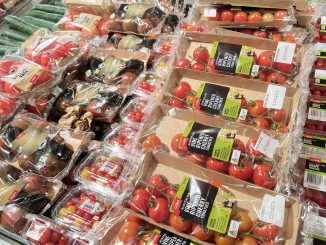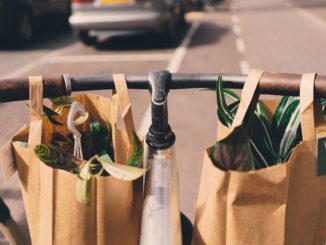
Topic & Angle
My news feature addresses the current fashion waste crisis in Australia, in the context of the upcoming Fashion Revolution week, occurring from April 22nd and 27th 2025.
This year’s Fashion Revolution Week celebrates “Think Globally, Act Locally.” Highlighting the importance of addressing the issue within local contexts like Australia.

My angle exposes the ongoing waste crisis and lack of effectiveness from popular sustainable practices in Australia, such as thrifting. I highlight the need for new solutions, reflecting on a recent study demonstrating AI’s role in potentially revolutionizing sustainability in the fashion sector.
Publication & Target audience
- Commitment to environmental issues: The Climate Pledge.
- Combines expert and community voices with multimedia storytelling.
- “The Guardian is globally renowned for its coverage of politics, the environment…”
Young adult socially conscious Australians, fashion industry professionals, and environmentalists are my target audience. People who are interested in sustainable fashion, overconsumption, and AI. This aligns with the Guardian’s audience, as 59% are environmentally minded.
Background research
- The fashion industry’s environmental impact is a significant issue in Australia; topic discussed by the Australia Institute in the video below.
- According to the Australia Institute, the average Australian buys 56 new items of clothing each year, making Australia the largest consumer of clothing in the world per capita.
- Fast fashion brand Temu has monthly shoppers in the country over 1.6 million and 1.1 million for Shein. In Australia, the fast fashion market is valued at $2.3 billion.

- Australians are turning towards alternative consumption practices, however, excessive thrifting does not address the fundamental issue of overconsumption, it only shifts the purchasing patterns without reducing demand.
- To fight this crisis, AI emerges as a potential tool to revolutionize sustainability practices in the fashion industry. This includes optimizing supply chains, enhancing recycling processes, or even creating sustainable materials.
Interviews
1) Aya Richardson, Country Coordinator of Fashion Revolution Australia: Figure in Australia’s sustainable fashion movement.
- Request a Zoom interview via her email. I aim to ask her how we can improve the situation and her thoughts on the Australian fashion industry, the currently implemented solutions such as thrifting, and potential new ones like AI.
2) Professor Shahriar Akter, lead Researcher on AI for climate action: Academic voice in the field of AI and sustainability.
- Contact Professor Akter via email, sending a formal request to discuss his paper online through Zoom and any new developments on the topic.
3) Citizens at Shopping Malls/thrift shops: Understanding the awareness and behavior of Australians regarding fashion sustainability.
- Conduct in-person interviews with voluntary participants at local shopping malls and thrift shops.
Multimedia, hypertext, and interactivity
- Multimedia: Images, videos, and infographics showing fashion waste stats in Australia.
- Hypertext: Link to the Fashion Revolution week, Professor Akter’s study, and reports/statistics (eg. Statista).
- Interactivity: Invite to the Down to Earth Newsletter.
Word count: 500 (with titles and captions)





I think Emilie’s news proposal is a well-structured exploration of Australia’s fashion waste crisis, tied closely to Fashion Revolution Week. Her focus on AI as a potential solution offers a fresh angle that will resonate with The Guardian’s environmentally conscious audience, who tend to seek creative sustainability approaches. The proposal shows sufficient research with credible data, diverse interviewees. Additionally, her smart use of multimedia and hyperlinks enhance online delivery. I would like to suggest adding specific examples of AI applications like supply chain tech to strengthen the argument. Overall, it meets journalistic standards, balancing news value with research depth.